
Hiking the Headwaters & A-Zs
Adventure is the spice of life, or so they say.
If that is the case, then Big Sky certainly serves up some of the spiciest terrain in the lower 48. So spicy in fact, that they added an extra diamond to a few zones last year so freeriders would think twice before biting off more than they could chew. There are plenty of steeper and more famous lift-accessed trophy lines in the West that skiers and riders may have under their belt, but continuing with the food metaphors, this is not a true apples-to-apples comparison.
It is the combination of technical hiking, prolonged exposure, steep terrain, intricate route finding, potential avalanche danger, slough management, rockfall, and ski patrol’s dedication to true fall line skiing that has earned it the reputation of the gnarliest run you’ve never heard of.
It takes many skills to safely navigate these zones from boot pack to cat track, but there is one that you will need above them all…the ability to read. The signage at the gate is not your typical skier code copy or legal boilerplate. It provides vital information for your ascent, descent and should be studied thoroughly before committing to your line. Here are a few local tips to help make your first Headwaters or A-Z experience a good one.
Go With A Guide
Have a friend or guide who is familiar with these zones show you the way. Ask them to take a warm-up run on something like Stillwater Traverse (below Headwaters) or Upper Morningstar (below A-Z’s) to help get your bearings. Snap a few photos, find a few prominent landmarks you can spot from above, and spin a lap to work out the jitters before hitting the hike.
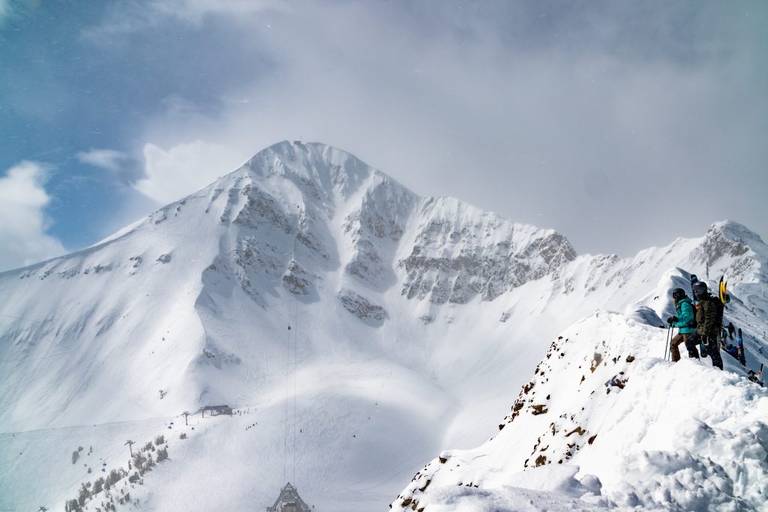
Fashion & Function
Beacons and backpacks…So hot right now. You’ll probably notice other skiers and riders sporting technical gear in this terrain. It is definitely the cool thing to do, but not for the reasons one might think. This high alpine fashion trend is one of necessity. Your pack or “kit” containing an avalanche beacon, probe, and shovel (along with you and your partners knowing how to properly use them) is a vital part of the big mountain game. Play it right, get yours dialed, and practice how to use your gear before heading into avalanche terrain.
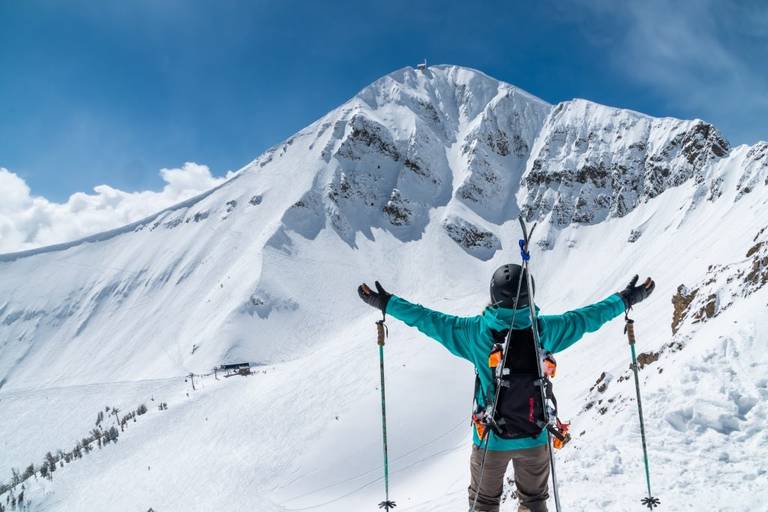
Big Mountain Beta
Ski Patrol is a great source of information on the ever-changing boot pack and snow conditions. Stop by PHQ at the top of Six Shooter, thank them for their hard work, and ask them what they saw on route. A little respect goes a long way. Remember that many of these men and women have years of experience in these zones and have pretty much seen it all. They are the shepherds of the Peak. Be humble, respect their terrain closures, listen to what they say, and you’ll be back to shred another day.

On Your Right
Ridgeline real estate can get pretty tight. If you hear or feel someone coming up behind you on the boot pack hiking at a faster pace, find a safe spot to step aside and let them pass. Similarly, if you wish to pass someone just look for the next spot that is wide enough and politely ask if you can slide by downhill of them on their right.
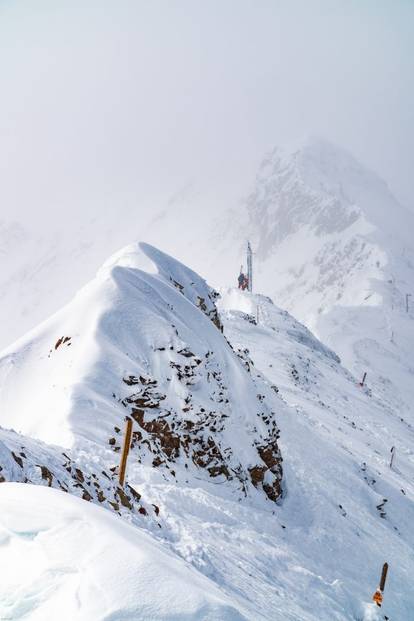
No Yellow Snow
You’ll notice that there is no “pee” in pristine. Help keep it that way by not relieving yourself on the bootpack or entrances. Use the bathrooms at the top of Six Shooter, the Bowl, or Madison Base before heading up for your hike. Kind of like when your parents made you go to the bathroom before a long road trip, even though you didn’t have to.
Fall-Line & One At A Time
This terrain has numerous no-fall zones and is meant to be ridden continuously top to bottom one at a time for safety and flow. Line selection, speed control, and your self-arrest skills need to be on point. Communicate with your partner or group dropping before you so everyone knows where they are going and when it should be clear to drop next. Radios are a great way to communicate with your partners.
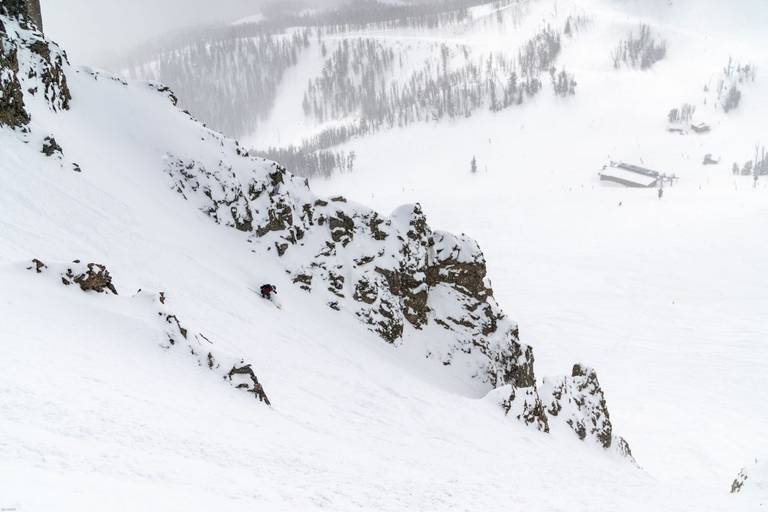
Poachers Beware
On the hike, you may notice several classic Big Sky stickers from over the years. One of my personal favorites adorns a gear cache at the saddle of Parachute and Jack Creek, with a Western reminder about respecting the mountains and the people who live amongst them. Ducking ropes and traversing into this terrain is strictly prohibited. Doing so will most likely result in a high-speed whitewash by those above you and an even colder greeting from Ski Patrol waiting below. Ski it right, do the hike, and enjoy some of the best in-bounds, big mountain, fall-line skiing in North America.
Erik Morrison (affectionately called E-Mo by our mountain community) is a Big Sky Resort Athlete Ambassador, local business owner, and active member of Big Sky’s community. He has been exploring Lone Peak and the surrounding Big Sky backcountry for 20+ years. He is easy-going, hard to follow, and can often be found on some of Big Sky’s spicier ridgelines.
More to Explore
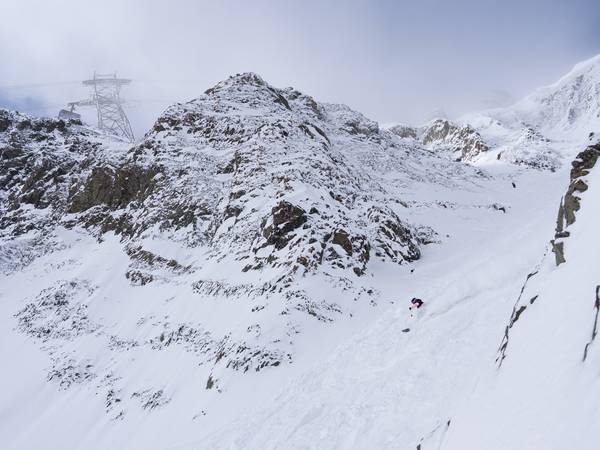
Big Sky Resort Introduces Triple Black Diamond Trail Rating
Learn about the changes and what a triple-black-diamond trail might have in store for you.
Read More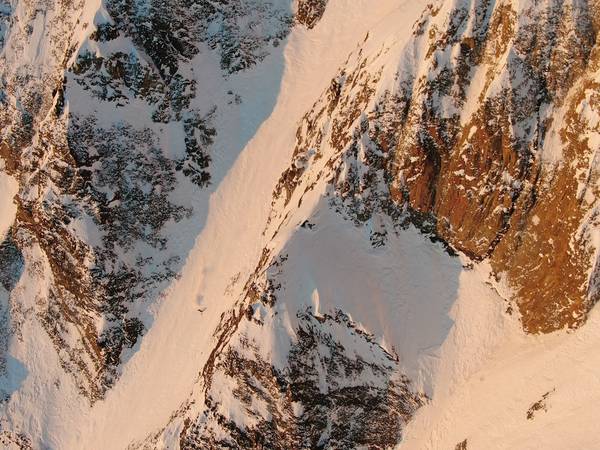
Preparing to Drop Into the Big Couloir
Extreme skiing pioneer Dan Egan shares his checklist to prepare for skiing the classic Big Sky line for the first time.
Read More







